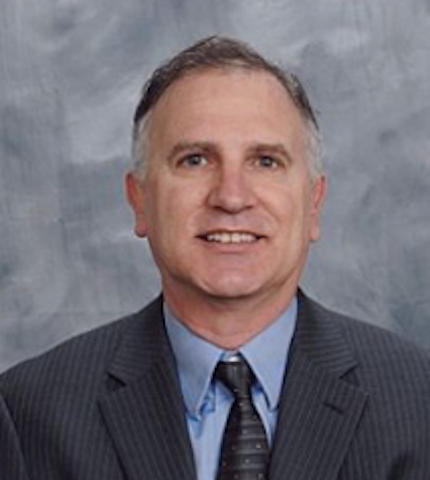 However promising gamification in health care may be, it is the AR that may well hold the most promise for health care. Google was not wrong to pursue Google Glass, just premature. Pokémon Go may be signaling that we're now finally ready for AR, and that it will be consumers as well as professionals who can benefit from it. The potential uses in health care are virtually endless, but here are a few examples...Ever feel like your doctor spends too much time staring at your chart or a screen? Instead of looking there for information about you, how much better would it be if he/she was looking at you, with AR notations for key information about you?...
However promising gamification in health care may be, it is the AR that may well hold the most promise for health care. Google was not wrong to pursue Google Glass, just premature. Pokémon Go may be signaling that we're now finally ready for AR, and that it will be consumers as well as professionals who can benefit from it. The potential uses in health care are virtually endless, but here are a few examples...Ever feel like your doctor spends too much time staring at your chart or a screen? Instead of looking there for information about you, how much better would it be if he/she was looking at you, with AR notations for key information about you?...
 The Health Information Technology for Economic and Clinical Health (HITECH) Act provided providers with a significant financial incentive to increase the adoption and use of EHRs. EHR vendors were required to conduct and report on a summative usability evaluation of their system as part of the Stage 2 Meaningful Use program (The ONC 2014 Edition Certification). However, a recent report funded by the Agency for Healthcare Research and Quality (AHRQ), identified several “issues” with the certified EHR vendors in the processes, practices and use of standards and best practices with regard to usability and human factors.
The Health Information Technology for Economic and Clinical Health (HITECH) Act provided providers with a significant financial incentive to increase the adoption and use of EHRs. EHR vendors were required to conduct and report on a summative usability evaluation of their system as part of the Stage 2 Meaningful Use program (The ONC 2014 Edition Certification). However, a recent report funded by the Agency for Healthcare Research and Quality (AHRQ), identified several “issues” with the certified EHR vendors in the processes, practices and use of standards and best practices with regard to usability and human factors.
 CIS Mobile, a leader in mobile security, today announced the release of altOS 10. This new major release adds significant security, management, and control features for sensitive government user cases and updates the altOS operating system to Android 10. In addition to the new privacy features incorporated into Android 10, this major update to the altOS platform includes...Secure Mode upgrades. Secure Mode enables altOS devices to dynamically control access to peripherals that might be used to exfiltrate data from sensitive government sites, or that could reveal sensitive location data to a foreign adversary.
CIS Mobile, a leader in mobile security, today announced the release of altOS 10. This new major release adds significant security, management, and control features for sensitive government user cases and updates the altOS operating system to Android 10. In addition to the new privacy features incorporated into Android 10, this major update to the altOS platform includes...Secure Mode upgrades. Secure Mode enables altOS devices to dynamically control access to peripherals that might be used to exfiltrate data from sensitive government sites, or that could reveal sensitive location data to a foreign adversary. Electronic health records slow doctors down and distract them from meaningful face time caring for patients. That is the sad but unsurprising finding of a time and motion study published in Tuesday’s Annals of Internal Medicine1. A team of researchers determined that physicians are spending almost half of their time in the office on electronic health records (EHRs) and desk work and just 27 percent on face time with patients — which is what the vast majority of doctors went into medicine to do. Once they get home, they average another one to two hours completing EHRs...
Electronic health records slow doctors down and distract them from meaningful face time caring for patients. That is the sad but unsurprising finding of a time and motion study published in Tuesday’s Annals of Internal Medicine1. A team of researchers determined that physicians are spending almost half of their time in the office on electronic health records (EHRs) and desk work and just 27 percent on face time with patients — which is what the vast majority of doctors went into medicine to do. Once they get home, they average another one to two hours completing EHRs... "The human mind can do many things well. Digesting vast amounts of patient information while multitasking in time-constrained situations exposes a limitation. EHR technology should be able to complement or enhance physicians' abilities in these scenarios," said Regenstrief Institute Research Scientist April Savoy, PhD, who led the new study. "But current EHRs are overloading primary care physicians with information in disparate files and folders rather than presenting comprehensive, actionable data in a context that gives meaning.
"The human mind can do many things well. Digesting vast amounts of patient information while multitasking in time-constrained situations exposes a limitation. EHR technology should be able to complement or enhance physicians' abilities in these scenarios," said Regenstrief Institute Research Scientist April Savoy, PhD, who led the new study. "But current EHRs are overloading primary care physicians with information in disparate files and folders rather than presenting comprehensive, actionable data in a context that gives meaning. GitLab's open culture is one of its strongest assets and the main reason I use GitLab in DevOps transformations. The community edition's code is open source and the paid version makes its source code available for contributions. These are valuable factors rooted in the company culture its CEO has diligently maintained over the years. It doesn't hurt that its tools are great, too. I believe GitLab's sales and marketing team is the best of any company out there. They have included me as a user, customer, and friend over the last few years, and they are genuine and caring people. This was underscored last year when I wanted to contribute a feature, and GitLab's team went to extraordinary lengths to help me succeed. Here's the story of making my first contribution to GitLab.
GitLab's open culture is one of its strongest assets and the main reason I use GitLab in DevOps transformations. The community edition's code is open source and the paid version makes its source code available for contributions. These are valuable factors rooted in the company culture its CEO has diligently maintained over the years. It doesn't hurt that its tools are great, too. I believe GitLab's sales and marketing team is the best of any company out there. They have included me as a user, customer, and friend over the last few years, and they are genuine and caring people. This was underscored last year when I wanted to contribute a feature, and GitLab's team went to extraordinary lengths to help me succeed. Here's the story of making my first contribution to GitLab. At All Things Open 2016, Joe Brockmeier answers the question: How can companies can work effectively with open source communities? In his talk, Joe reminded us of the #1 open source myth: Open source is comprised of mostly volunteers. The truth is, these days, pretty much any major open source project has people who are paid to work on it. There are always people who do it because they love it, but these days most of us are paid (and still love it). Over the years we have learned that if you want patches in a timely manner, you need people who are paid to do it...
At All Things Open 2016, Joe Brockmeier answers the question: How can companies can work effectively with open source communities? In his talk, Joe reminded us of the #1 open source myth: Open source is comprised of mostly volunteers. The truth is, these days, pretty much any major open source project has people who are paid to work on it. There are always people who do it because they love it, but these days most of us are paid (and still love it). Over the years we have learned that if you want patches in a timely manner, you need people who are paid to do it... If you wax enthusiastic about “patient engagement,” or work with health and fitness devices, or want to derive useful data from patient monitoring in the field, or–basically–read this blog for any reason at all, you should check out a recent study in the Journal of Medical Internet Research. It warns about psychological and logistical factors that trip us up when we try to get patients to monitor their vital signs. The paper has a catchier title than most: “You Get Reminded You’re a Sick Person”: Personal Data Tracking and Patients With Multiple Chronic Conditions (citation: J Med Internet Res 2015;17(8):e202)...
If you wax enthusiastic about “patient engagement,” or work with health and fitness devices, or want to derive useful data from patient monitoring in the field, or–basically–read this blog for any reason at all, you should check out a recent study in the Journal of Medical Internet Research. It warns about psychological and logistical factors that trip us up when we try to get patients to monitor their vital signs. The paper has a catchier title than most: “You Get Reminded You’re a Sick Person”: Personal Data Tracking and Patients With Multiple Chronic Conditions (citation: J Med Internet Res 2015;17(8):e202)... The usability of healthcare software, or lack thereof, has been a topic of discussion for several years. The problem has become so widespread that the American Medical Association (AMA) has recently issued a framework for improving the ease of use of EHRs that, in part, includes the reduction of 'cognitive load.' Piaget’s theories can be applied to understanding some of the reasons why many EHRs are just too hard to use. They can provide guidance for finding ways to reduce the cognitive workload that so often hinders the user experience of EHR systems.
The usability of healthcare software, or lack thereof, has been a topic of discussion for several years. The problem has become so widespread that the American Medical Association (AMA) has recently issued a framework for improving the ease of use of EHRs that, in part, includes the reduction of 'cognitive load.' Piaget’s theories can be applied to understanding some of the reasons why many EHRs are just too hard to use. They can provide guidance for finding ways to reduce the cognitive workload that so often hinders the user experience of EHR systems.  Today, if you’re building a new product or service, open source software is likely playing a role. But many entrepreneurs and product managers still struggle with how to build a successful business purely on open source. The big secret of a successful open source business is that “it’s about way more than the code,” says John Mark Walker, a well-known voice in the open source world with extensive expertise in open source product, community, and ecosystem creation at Red Hat and Dell EMC. “In order to build a certified, predictable, manageable product that ‘just works,’ it requires a lot more effort than just writing good code.”...
Today, if you’re building a new product or service, open source software is likely playing a role. But many entrepreneurs and product managers still struggle with how to build a successful business purely on open source. The big secret of a successful open source business is that “it’s about way more than the code,” says John Mark Walker, a well-known voice in the open source world with extensive expertise in open source product, community, and ecosystem creation at Red Hat and Dell EMC. “In order to build a certified, predictable, manageable product that ‘just works,’ it requires a lot more effort than just writing good code.”...